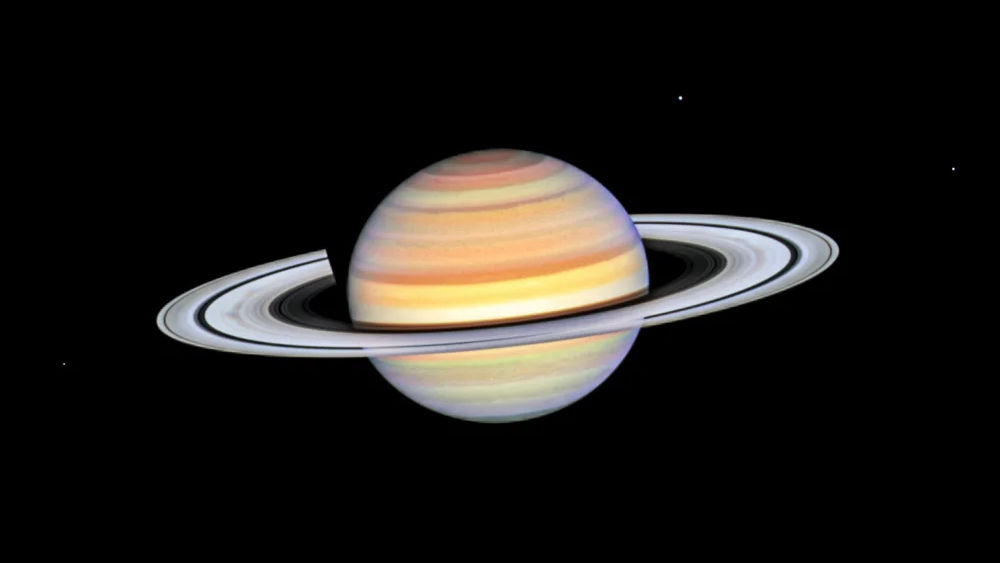
Photo by NASA/Amy Simon
Published on: Dec 28, 2023
The Hubble Space Telescope, an icon of space exploration, has once again captured the imagination of astronomers and space enthusiasts alike with its latest image of Saturn's rings. This recent snapshot, taken on October 22, reveals the enigmatic "spokes" gliding across the planet's rings, a phenomenon that continues to perplex scientists. At the time of this remarkable observation, Saturn was positioned approximately 850 million miles away from Earth.
For decades, astronomers have been intrigued by these ghostly spokes on Saturn’s rings. First discovered by the Voyager 2 spacecraft in the 1980s, these mysterious features appear as transient, shadow-like markings skating across the planet's rings. Their visibility fluctuates based on Saturn's position in its orbit, and they can be observed at various points during the planet's cycle.
One of the most fascinating aspects of these spokes is their dynamic nature, influenced by Saturn's seasonal changes. Much like Earth, Saturn’s axis is tilted, leading to seasons that span approximately seven years each. Observations over time have shown that the spokes' appearance and frequency change with these lengthy seasons, suggesting a deeper connection to the planet's climatic patterns.
As we approach the peak of spoke activity, scientists are gearing up for a period of intense observation. "We are heading towards Saturn equinox, anticipating an increase in the frequency and visibility of these spokes," stated Amy Simon, lead scientist of Hubble's OPAL program at NASA’s Goddard Space Flight Center. This equinox, a key event in Saturn’s seasonal cycle, is expected to occur on May 6, 2025.
The phenomenon of Saturn's spokes is not only intriguing due to their ghostly appearance but also their colossal scale. These features can span widths and diameters larger than Earth itself, a testament to the grandeur and mystery of Saturn’s ring system. The upcoming equinox presents a critical opportunity for researchers to delve deeper into this phenomenon, with hopes of finally unlocking the mystery behind these celestial apparitions.
NASA has proposed a compelling hypothesis regarding the origin of these spokes. The planet’s fluctuating magnetic field, interacting with solar wind, creates a charged environment that could be responsible for the spokes. This interaction could lift tiny particles from the rings, forming the visible structures much like the aurora borealis results from charged particles hitting Earth's atmosphere.
As we edge closer to the 2025 equinox, the scientific community eagerly anticipates new data from Hubble. This information could potentially confirm or challenge existing theories about the spokes, building upon decades of research initiated by Voyager 2 and continued by the Cassini mission. This endeavor not only seeks to solve a long-standing space puzzle but also enriches our understanding of the dynamic and ever-fascinating outer reaches of our solar system.